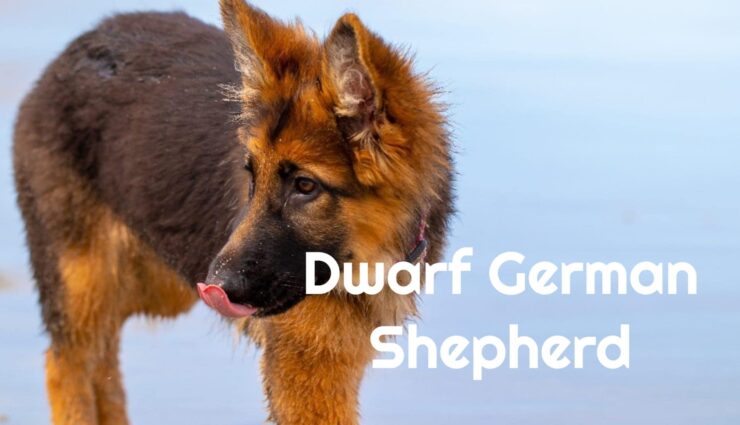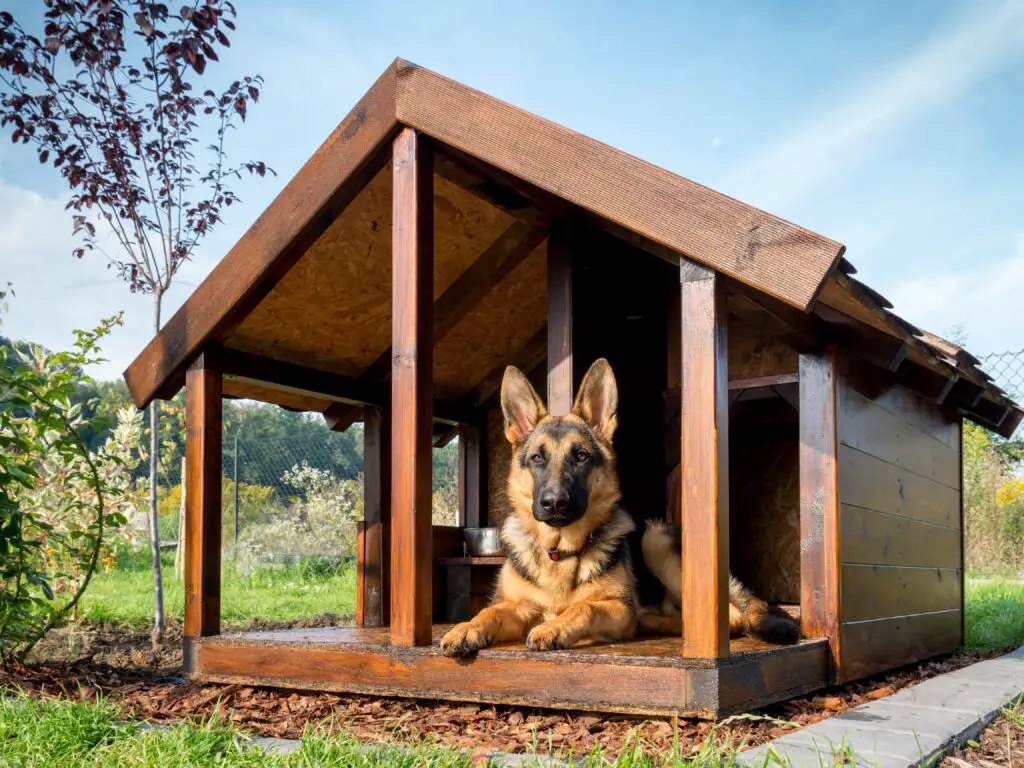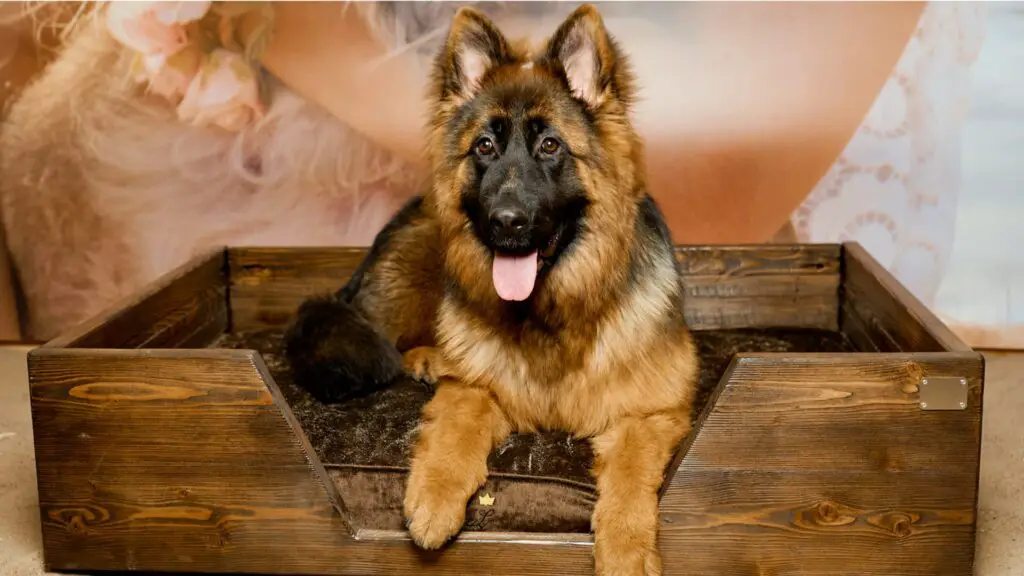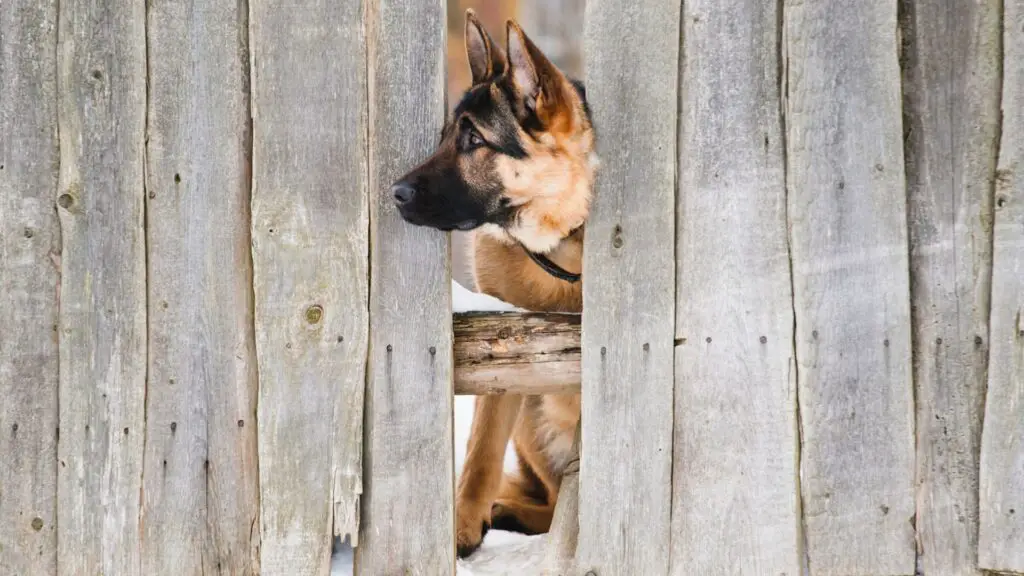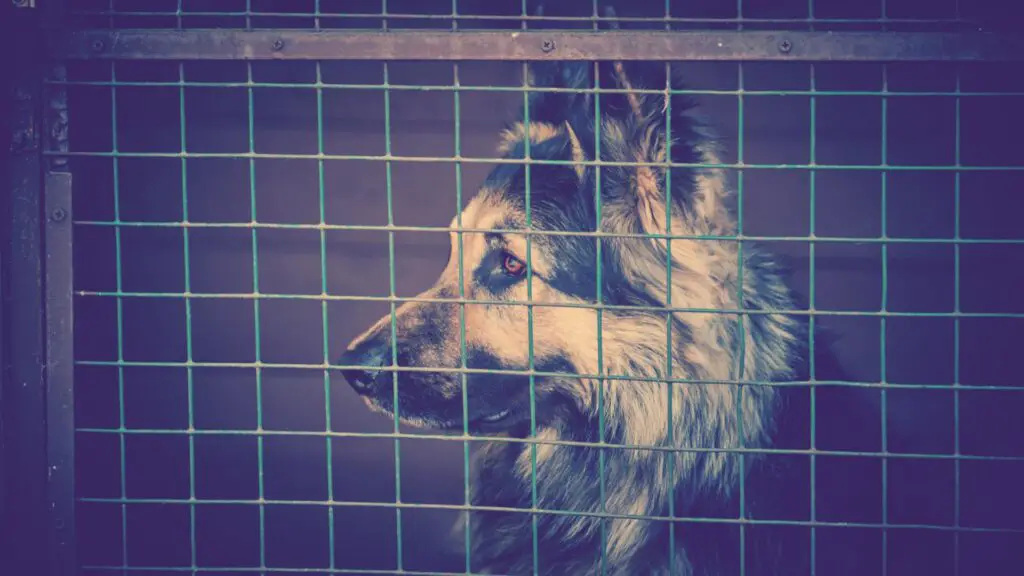Ever heard or come across a dwarf German shepherd? Hold on to your answer.
Meet Ranger, a dwarf German shepherd dog who has won the hearts of many Instagram followers.

Ranger, ‘’is a little guy’’ who suffers from pituitary dwarfism. Also, besides being past his second birthday, ranger still resembles a puppy.
According to Ranger’s owners, the Dwarf German shepherd suffered from a neck infection and two other different parasites when they adopted this ‘little guy.’
During this treatment, they discovered Ranger was sick. On top of that, the dog continued to be small, despite being treated for a neck infection.
Also, it’s during all this course of treatment that the vet noticed that ranger was suffering from dwarfism.
Thus, the vet concluded in this case; the dwarfism was because of the parasite (giardia).
After Ranger got neutered, his health condition deteriorated as he lost weight, and the skin becomes flaked and dry.
However, one of Ranger’s Instagram followers came to salvage the situation by donating goat soap milk that relieved the ranger’s deteriorating condition.
So, can German shepherds have dwarfism, and what are the probabilities? To learn more, continue reading on.
Can a German Shepherd have dwarfism?

Compared to other breeds, German shepherd dogs have a high chance of getting pituitary dwarfism. In fact, 20% of pure German shepherd dogs have this recessive gene. However, other species such as the spitz, lab, and the miniature pinscher are susceptible to pituitary dwarfism.
This genetic condition is inherited from one GSD generation to another.
Scientifically this condition is known as a recessive genetic disorder. By that, it means for the disease to be transmitted to the puppies, each parent must have this faulty gene.
Also read: Long haired German Shepherd.
Dwarfism in Dogs:

Also known as nanism, dwarfism in GSDs occurs when the growth hormone is deficient. That said, during a puppy’s gestation period, there is an underdevelopment of the pars distalis, thus enhancing the development of dwarfism.
Dog Breeds Susceptible To Dwarfism
Below are the dog breeds more likely to suffer from this autosomal recessive disorder
- German shepherd dogs
- Saarloos wolf dog
- Czechoslovakian wolf dog
- Karelian bear dog
- Pugs
- Pekingese
- Bulldogs
- Cocker spaniel
- English pointer
- Boston terrier
- Basset hounds
However, German shepherds and pugs are the most commonly prone to pituitary dwarfism.
Fun Fact -Did you know that its only three dogs that survived when the titanic ship sank?
Additionally, dwarfism can be a serious health condition to other breed dogs. However, in some breeds such as the Deutschland, dwarfism is a result of selective breeding.
Breeds such as the Welsh corgi and the beagles were in ancient times selective bred for hunting small wildlife.
Ultimately, dwarfism in dogs is an undesirable trait, just as it is in humans.
However, as many people do, don’t mistake pituitary dwarfism with achondroplasia, a condition where the dog’s limbs are extremely short compared to its size.
The Welsh corgi and the dachshund are some breeds that suffer from achondroplasia dwarfism.
Plus: Read about half wolf half German shepherd.
Pituitary Dwarfism (Hypopituitarism) In German Shepherds

Pituitary dwarfism is an autosomal recessive condition affecting both humans and dogs. Furthermore, this is a genetic condition that is passed on from generation to generation.
As earlier discussed, pituitary dwarfism is much expected in GSD as compared to other breeds. Primarily, this condition results from the degenerative destruction of the pituitary gland.
The destruction of the pituitary gland, the master gland, causes less production of the other pituitary hormones.
Such hormones include
- Thyroid-stimulating hormone
- Lutein hormone
- Adrenocorticophine hormone
- Follicle-stimulating hormone
Thus, dwarf German Shepherd dogs have an issue with their growth hormone. Also, dwarf German Shepherd may resemble puppies, whereas they have attained maturity.
Clinically these furry canines have stunted growth.

Genetics of Dwarf German shepherd
This disorder occurs when there is a mutation of the LHX-3 Genes that code various transcription factors.
Causes of Pituitary Dwarfism
Inheritance
Inheritance is the primary cause of this genetic defect. This autosomal recessive disorder is transferred to a puppy in case both the dam and the stud dog have this defective gene.
However, in case it is only one of the German shepherds’ parents with this gene, the puppy will remain a carrier of these dwarf genes.
Cystitis
Though controversial, cysts on the pituitary gland are thought to predispose a GSD to dwarfism.
According to genetic researchers, the pressurization of the anterior lobe of the pituitary gland by the cystic enlargement of the craniopharyngeal duct is a risk factor for a dog’s dwarfism.
Infection
Like Ranger, the famous dwarf German shepherd dog, infections also have a hand in causing dwarfism.
Important read: How big can a german shepherd get?
How Can You Tell You Have a Dwarf German shepherd?
By the age of 2 to 3 months, a dwarf German shepherd will start showing signs of pituitary dwarfism.
However, the clinical manifestations may be different from one hound to another.
Symptoms and clinical manifestations associated with this incapacitating disease.
Muscle-Skeletal System
Stunted growth
Due to the defiance of the growth hormone, dwarf German shepherd dogs have a small stature. All body parts seem compact and miniature.
- Fox like feature: a dog with pituitary dwarfism resembles a fox, a big head with huge triangular ears.
- Bulging eyes with a sleepy look
- Long body
- Bowed front legs
- Delayed teeth development
The Skin
You can quickly tell a dwarf German shepherd by the look of the skin.
The skin may look:
Thin and fragile – the skin losses its elasticity, and it’s weak.
Hair Loss (Alopecia)
A Dwarf German shepherd losses lots of hair. This can be attributed to hormonal abnormalities.
Also, secondary hypothyroidism common in Dwarf German shepherds can cause alopecia.
Alopecia, combined with a suppressed immune system, causes severe skin bacterial infection that can cause much distress to a hound.
Again there is much hair loss on the extremities, the neck, and the trunk.
Soft Wooly Puppy Coat
Dwarf German shepherd still at their prime don’t grow hair. Consequently, the original puppy hair is retained to cover the coat.
Lack of Guard Hairs
Dogs suffering from pituitary dwarfism lack guard hairs common in other dogs.
Similar to its name, this guard hair protects the dog from extreme environments such as prickly thorns and the cold weather.
Additionally, these guard hairs are oily, thus useful in waterproofing.
Seborrhea Sicca (Dry Flaky Skin) and Seborrhea Oleosa (Dry Oily Skin)
Another common feature in dwarf German shepherds.
This skin order makes the dog have scaly, flaky, itchy skin. In most instances, this condition attacks areas such as the paws, armpits, and thighs.
Also, this condition can be worsened in case a bacterial infection attacks the dog. Mainly, seborrhea in dwarfism dogs is caused by an imbalance of the thyroid hormones.
However, in other dogs, this skin condition can be caused by allergies, parasites, fungal infections, and other environmental features.
This seborrheic dermatitis can be stressful for dogs because of excessive itchiness. However, this condition can be controlled by either using anti-seborrheic shampoos, corticosteroids, or moisturizers.
Hyperpigmentation
Mostly occurs under the belly. The skin darkens more than usual.
Most vets say that dogs with hypothyroidism are more likely to suffer from hyperpigmentation.
Other notable features on the skin of a dwarf German shepherd include the development of pyodermas, papules, and comedones.
Features on the Reproductive System
Most dogs suffering from pituitary dwarfism are infertile.
For the males, they may lack one or two testes in their scrotum (cryptorchidism).
Worth to note is that males still have the testes, but they have not descended into the scrotum. Most males are neutered to prevent future problems such as the spreading of this defective gene.
For the females, they lack the normal estrus (heat) cycle.
Other visible symptoms include :
- A squeaky puppy-like bark
- Mental retiredness
- Deviated spinal cord
- Enlarged joints
- Heart issues
- Aggression
Fun fact – Do you know that your fully grown German has the same knowledge as a 2-year-old toddler?
Health Issues Associated With German shepherd Dog Dwarfism
- Arthritis- mainly occurs due to the un-proportional distribution of weight
- Osteochrondodysplasia (quite a mouthful word), but this disorder affects the bone’s bone’s normal development and the cartilages.
- Disc disease: because of the long backbone and a big head
- Dental problem; most pituitary dwarfism dogs have a crowded jaw,
- Kidney failure
- Cataracts, a study was done in Australia, illustrates that dogs with dwarfism are more likely to have cataract eyes.
Diagnosis of Dwarfism
German shepherds can have dwarfism. Your vet can recommend a wide range of diagnostic tests to ascertain whether you have a dwarf German shepherd dog.
Physical Test
Your vet may check for any abnormal loss of hair, hyperpigmentation, follicular keratosis, and hyperkeratosis.
Comparing the physical height with other puppies can also come in hand.
Other physical tests that can be done include:
- Auscultation
- Palpation,
- Weight
- Respiration rate
However, these physical tests cannot be used as a definitive test to confirm that your German shepherd has pituitary dwarfism.
Thus, your vet may advise the necessity of performing a hormone test.
Hormone Test
Such a test includes:
Serum Somatomedin (Insulin-Like Growth Factor 1(IGF-1)
Low levels of this growth factor are associated with pituitary dwarfism in dogs. This IGF-1 test is commonly used to test dogs that have stunted growth.
Also, diagnosis can be made by measuring Serum GH concentration (although many genealogical specialists are abandoning this methodology)
Other hormonal tests that can be performed include:
- Thyroid-stimulating hormone test, purposely to check whether there is hypothyroidism.
- Follicle-stimulating hormone test
- Prolactin hormone test
- Adrenocorticotrophic hormone test
All the above is critical endocrine test that is necessary when it comes to determining whether a German shepherd has dwarfism.
DNA Diagnostic Test
DNA diagnostic test comes in handy when it comes to determining whether a German shepherd has dwarfism.
This diagnostic test whether your puppy has all the dwarfism genes or only your dwarf German shepherd is a carrier.
A canine with pituitary dwarfism has a mutation in all the alleles; thus, in their gene pairing, the result is positive- positive.
Consequently, dogs with positive or negative results carry the dwarfism gene, and it can trickle down to their offsprings. Worth to note, these dogs are carriers, but they are not dwarfs.
Hence such carrier breeds should be spayed or neutered to prevent the spread of this genetic defect.
Diagnostic Imaging
This diagnostic test comes in handy when it comes to the identification of pituitary dwarfism in dogs.
In case your vet is suspected of any pituitary dwarfism, your German shepherd dog may undergo MRI or a CT-scan.
Both of these scans can capture lesions or even intra-pituitary cystitis. However, the presence of pituitary cystitis cannot be a definitive factor to affirm that you have a dwarf German shepherd dog.
Other normal dogs can have pituitary cystitis, which may be normal, whereas an infection can cause another cystitis.
Skin Biopsy
Primarily to check what’s causing seborrhea and hair loss.
Since pituitary dwarfism is a severe condition, your vet may recommend following various vital body functions, for example.
- Blood count
- Urinalysis
- Biochemical profile
On the whole, these tests may bring forth positive results, i.e., they are in the normal range.
Thus the above diagnostic test from the DNA test, Imaging, and hormone test is vital for identifying a dog suffering from pituitary dwarfism.
However, your vet is in the best position to advise you about the best diagnostic test to use.
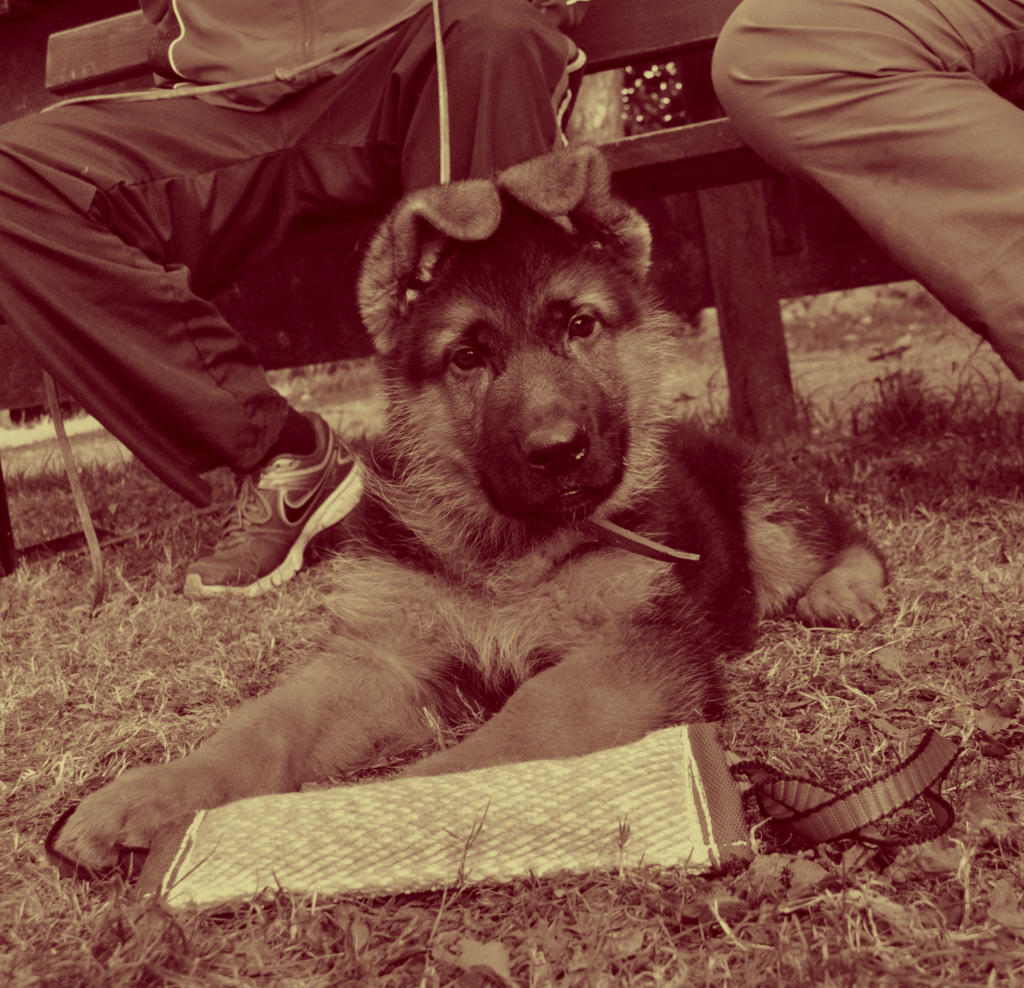
How Long Do German shepherd Dogs with Dwarfism Live?
An average German Shepherd’s life span can be complicated and shortened by dwarfism. Dwarfism shortens the lifespan of a dog by four years.
Besides that, many vets and pet owners have varied opinions regarding choosing the lifespan of a dwarf dog.
However, after research done at the University of Utrecht, The Netherlands, it was determined that a dwarf dog’s life span is five years.
However, if nurtured and taken care of, dwarfism dogs can even celebrate their seventh birthday.
But let not this abnormality stop you from owning or adopting a dwarf German shepherd dog. Nevertheless, it’s not their fault.
It’s the fault of unscrupulous breeders and pet farm owners who prioritize profit.
Is It Possible to Treat a Dwarf German shepherd Dog?
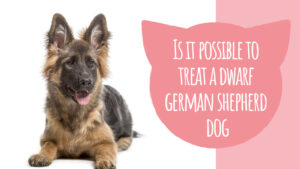
The above question has all along been controversial. Treating and managing a dwarf German shepherd dog can be possible; however, it is expensive and can take a toll on the pituitary hormones.
For instance, dogs with pituitary dwarfism are placed on hormone replacement therapy, where dosages of hormones are injected monthly. Commonly used therapies include –
- Use of synthetic levothyroxine, although results vary from one GSD to another.
- The use of porcine growth hormone- derived from the pig, stimulates the development of the growth hormone. This process is expensive.
However, for most in severe progressed dwarfism, vets can either decide to spay or neuter the dog.
Neutering
Commonly known as castration
Neutering involves the removal of the male reproductive systems (testes). Afterward, the male dog will have no chance of breeding with other females. This reduces the spread of this autosomal recessive disorder.
Spaying
Females undergo spaying, which involves the removal of their reproductive organs. Thus, they cannot undergo the heat and lose the ability to reproduce dwarf offspring.
Other dwarfism instances are treated asymptomatically, for example, administering anti-inflammatories to a dwarfism dog with arthritis, use of seborrheic shampoo to dogs with excessive itching.
Administering corticosteroids to reduce the rate of bone degeneration.
Caring and Living With a Dwarf Dog
Unfortunately, most pet owners hide or euthanize dogs born with dwarfism. This should not be the case; remember, it’s not the dog’s fault, as earlier stated.
Remember the famous dwarf German shepherd dog Ranger? What if they decided to hide this lovely dog?
Other writers and I could not have a fairy story to write about. Also, we couldn’t be having a fairy story to bring on the awareness of dwarf German shepherds.
Similar to other dogs, subject your dwarf dog to lots of love and treats. The hound needs you the most.
Additionally, don’t forget to give your dog a balanced diet, appropriate medication, but be cautious to avoid overdosing your dog.
Also, exercise is vital, as most dwarf dogs are prone to gain weight unnoticeably.
However, be cautious while excising with your dwarf German shepherd dog as they are susceptible to bone-breaking and arthritis, and frequent joint pain.
Additionally, your vet can advise you to use food supplements to feed your dwarf German shepherd.
A perfect example is fish oil, which is suitable for cognitive function, and also it reduces inflammation of joints in a susceptible dwarfism dog.
Equally essential is the CBD oil. This oil helps in reducing swelling and calming any anxiety disorder.
Tip: Make sure your German Shepherd is drinking enough water, with dwarfism they always need extra care.
The Exit
Dwarfism is a disliked trait in dogs. However, most unscrupulous breeders take advantage of this and sell these dwarf dogs as miniature dogs.
Nevertheless, a dwarf German shepherd or a Labrador deserves equal treatment, similar to any other dog.
Additionally, avoid buying your puppies from puppy mills as this is where most unscrupulous breeders lay prey for their next unsuspecting victim. Thus, as a responsible dog owner, I always advocate adopting puppies rather than buying from pet shops.

